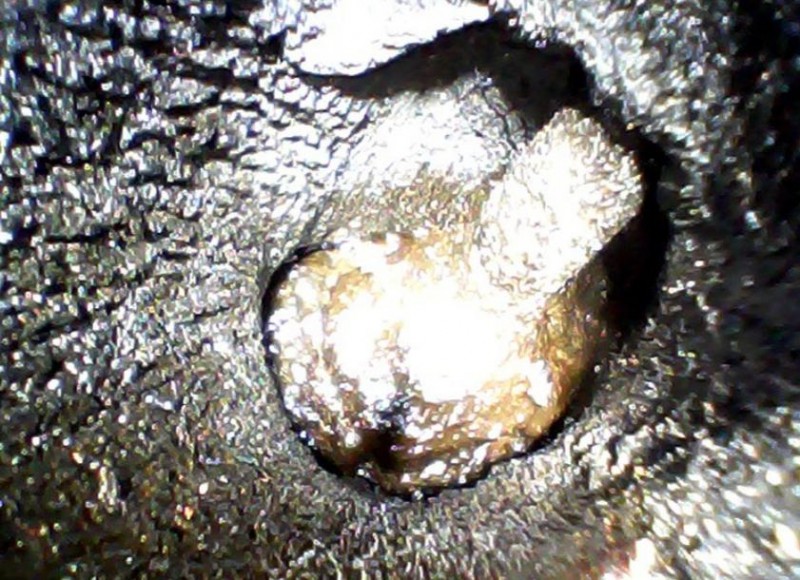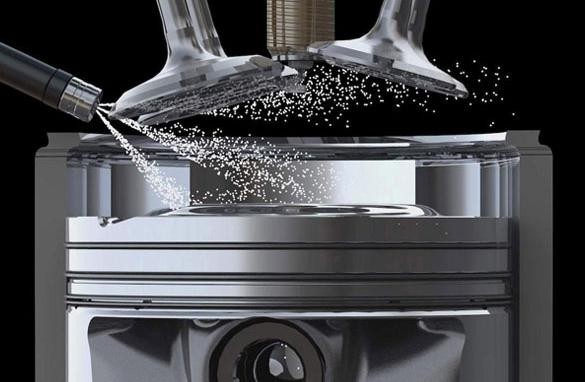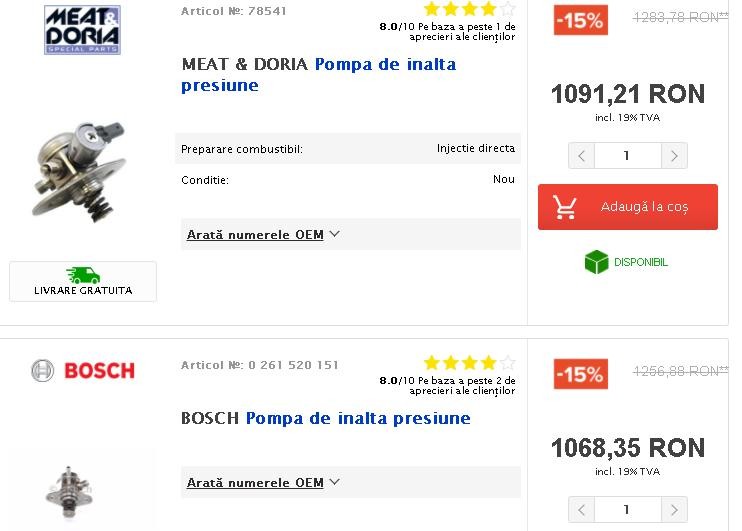Primii au fost cei de la Mitsubishi cu modelele GDI pe Pajero, Pajero Pinin, Carisma si Galant care s-au dovedit un mare esec la capitolul fiabilitate.
Acum dupa mai bine de 10 ani motorele de volum ale celor de la Mitsubishi sunt cu injectie MULTIPUNCT cu o singura pompa clasica care se dovedeste mult mai fiabila chiar si cand motorul depaseste 500.000 de km.

Depunerile de carbon pot provoca defecte doar atunci cind s-a trecut de un anumit prag in ceea ce le priveste. Peste un alt prag, de obicei mai jos, ele incep sa se scuture raminind la un nivel relativ constant in functie de modul in care este utilizat motorul, insa nu fara a-i afecta modul in care are loc aprinderea, procesul de admisie si capacitatea de admisie.
DE CE NU SUNT BUNE MOTOARELE CU INJECTIE DIRECTA DE BENZINA?
Asa cum poate deja stiti daca motorul tau are injectie directa cu siguranta are DEPUNERI SERIOASE pe supape, iar fiabilitatea celor doua pompe de benzina este deja costisitoare.
In cazuri extreme insa aceste depuneri poti sa se localizeze si pe scaunul valvei impiedicind-o sa se inchida complet, fie care este vorba de valve de admisie sau evacuare, si fara o inchidere completa a valvei compresia nu va mai fi cea nominala.

O astfel de problema se detecteaza prin acel test de leak-down care se face DUPA testul de compresie, urmind sa explice valorile de compresie prin procentele e(ne)etanseitate ale cilindrilor si care sint in functie de cat aer scapa un cilindru pe la valve sau pe la injectoare (la motoarele cu injectie directa, diesel sau benzina, injectorul e conectat direct in chiulasa in capul cilindrului, nu in porturile galeriei de admisie ca la cele multipunct).
Depunerile de carbon sint accelerate de pierderile sau scurgerile de ulei catre evacuare (turbine defecte, ghidaje sau garnituri valve evacuare coapte) sau de lucruri care influenteaza procesul de ardere: bujii neschimbate la timp, valve PCV blocate, valve EGR colmatate si care nu mai functioneaza corect, compresie scazuta pe cilindri si arderi de ulei, etc.
Prin natura sa, un motor termic mai arde o parte din ulei (si o inlocuieste cu funingine, carburant, apa, sau cu nimic si abia atunci vedem efectul pe joja). Acest lucru se intimpla in diverse conditii inclusiv la un motor 100% in parametri si in mintile lui. La aspirate acest proces este mult mai putin vizibil pentru ca presiunile si temperaturile din cilindri sint mai mici ca la cele turbo.

Dar pentru ca acest lucru totusi are loc nu inseamna ca aspiratele nu sufera de acest fenomen, mai ales cind are loc spumarea uleiului sau evaporarea lui datorita contaminarii si a ne-aerarii lui intr-un regim de exploatare preponderent urban.
Cum contaminarea cu carburant este semnificativ mai mare in cazul motoarelor cu injectie directa, inclusiv productia de vapori care se intorc in admisie prin PCV si respectiv funinginile produse ca urmare a arderii acestor elemente si care se intorc in parte prin EGR duc la contaminare.
Drept urmare este important ca in cazul motoarelor exploatate intr-un regim normal sa se foloseasca uleiuri care ard curat si care au un continut ridicat de detergenti, si asta veti intilni la uleiurile OEM sau specifice si care contin detergenti si elemente lubrefiante in cel mai bun echilibru (zinc si molibden care incep sa dispara pentru ca nu-s prietenoase cu catalizatoarele Euro5 mai ales 6, sulf, fosfor, etc).

Specialistii spun ca viitorul motoruli pe benzina in combinatie PHEV este cel al unui motor clasica cu injectie multipunct si OPF pentru a reduce emisiile de noxe. Un OPF se schimba mult mai rapid si mult mai ieftin decat un sistem de injectie directa cu pompe de inalte si injectoare cu presiuni foarte mari pe fiecare cilindru!
Mai jos vezi ce preturi au componentele la Dacia Duster 1.2 TCe 125 CP produs pana in anul 2018!














The one saying such nonsense is an EXTREMELY WEAK brained! The Ecoboost for example has won about a dozen prizez and for good reasons. The carbon buildup on intake valves is a problem that is otherwise very simple to fix with the right solution. I personally use an intake valves cleaner just for that purpose on my 125PS 1.0 Ecoboost of a Focus 3 and I initially had my valves pretty badly clogged…, even worse than in those images, but guess what! Compared to all of the mumbo jumbo and fears of what pretenders say of what will go wrong…, my engine was working exactly like brand new without hesitations on any load or any indication that something would be wrong. So even with badly clogged valves (maybe they needed some more carbon) I had no issues whatsoever. But after seeing that in my intake valves (used a borescope for that) I have found some foam from “Amsoil” (no commercial, so give me a break with crappy comments) and bought it and used it as it was prescribed. Guess what…! After about a week or 2 after using it on the intake, the carbon buildup started to “build down” and also the pistons started to shine up a bit proving that the carbon was slowly getting away from the components. After a couple of months later I used it again to continue to process of cleaning them. Guess what! The initial application of that foam somehow continued the process of cleaning even further after I last checked to see how the carbon looks like and now before using it again (a couple of months later as I said) it was already much cleaner, but I still applied more foam anyway being happy to see that slowly that carbon disappears and gives the original shape to the valves and cleaning up the pistons, although as I repeat, the engine was working just fine even with that crap in it to be honest.
That simple it is to maintain and keep the intake and pistons clean on an Ecoboost. Dunno about other GDI designs, but on Ecoboosts, it all works pretty well. That cheap and rather quick because in about 1 hour since you start the process of using the foam from Amsoil (not making commercials, just telling what I’ve used myself) until you finish, the foam already starts to work. All I had to do was not such a hard work and was possible in two ways, one more efficient, the other slightly less but much quicker.
1. Take your time to remove the big rubber hose or whatever air duct goes into the throttle body and try to keep the engine at about 2000rpm or less but not let the engine stall (restart if needed) while fully spraying the foam directly onto the throttle body valve. Yes, make sure there is no dust or unwanted material in the air because now the air gets in unfiltered, but there’s nothing wrong about it as long as the air around is clear.
2. On my Ecoboost, I disconnect the air feedback hose that is closest and ahead of the throttle body and spray all the foam through that connector to have it go towards the throttle body. That feedback hose connector has a green push type clamp from which you must take out the safety clip (half of the whole clamp) and then push on the remaining clip to get the hose out.
One of these two was are enough (the 1st is more efficient) to completely clean your engine parts from carbon buildup by using a cleaner once at half an year until it’s cleaned and then once a year to keep it that way! Yes, it takes time for it to clean, but it does a very good job in the end.